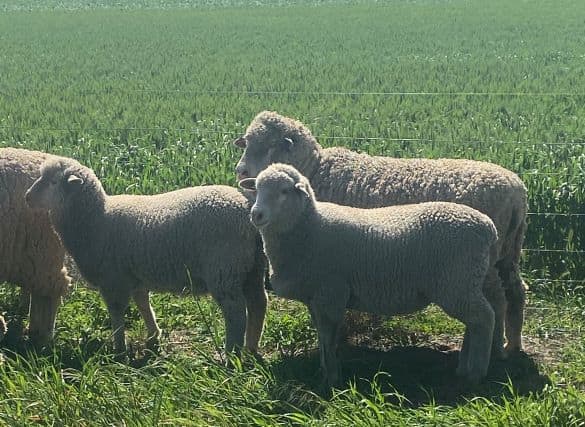Former Shearer Chooses Dohnes
WAYNE HODGE
LOCK, SOUTH AUSTRALIA
FOR Wayne Hodge, regardless of season, it’s the Dohne breed that will allow him to remain at full productivity.
‘Everglen’ of Lock, South Australia, sits at 4,000 hectares and is comprised of two-thirds cropping and one-third sheep.
Previously running Merinos and crossbreds, Mr Hodge made the shift to the Dohnes approximately 10 years ago which gave his operation the simultaneous benefit of meat quality as well as wool.
The majority of Mr Hodge’s Dohne flock are purebred, running 1,650 breeding ewes and 800 ewe lambs.
“As an ex-shearer, I saw a variety of breeds getting around and I particularly noticed that these sheep were in better condition than a traditional Merino, especially in tougher years.”
“Since getting into them ourselves, we have experienced exactly that,” said Mr Hodge.
“They do a lot better on not much feed and when times are tough, the Dohnes just keep on going.”
Mr Hodge looks to ASBVs when buying rams as they’re really after the dual-purpose traits the Dohne has on offer. He said the results speak for themselves.
“Since going to Dohnes our lambing percentages have increased by around 30%,” said Mr Hodge.
“We’ve also seen a boost in our wether lambs – we’re turning them out in half the time.”
“We sold them not long ago at five and a half months of age instead of being closer to 11 months, which is how long it used to take us to get weight on our sheep before selling. For that particular sale we topped the market at $157.”
On the wool front, Mr Hodge is equally impressed, with their cut improving over the years, now achieving a soft, crimpy wool type.
“This year, all of our sheep cut over 5.5kg of fleece wool at about 19-20 micron.”
“We sold our clip averaging over $1,000 bale, regardless of wool prices coming off dramatically.”
Mr Hodge said that the growth and health of their sheep far outweighs the marginal difference in wool cut between a traditional Merino and the Dohne. As a versatile sheep that presents solid results in both good and bad years, Mr Hodge is happy with his production and is now looking at fine tuning.
“We’ve got sheep that are quick growing and big enough, so we would look to concentrate on our fertility a bit more.”
“With our Merinos we’d be lambing at the 80 -85% mark and since the Dohnes, we’re now reaching up to 120% – so we’re definitely getting there.”

Dohne ewes with their five month old lambs.

Wool off 18 month old Dohne ewes.
Original article written by Nicola Wood, October 2020










 Facebook
Facebook YouTube
YouTube Instagram
Instagram